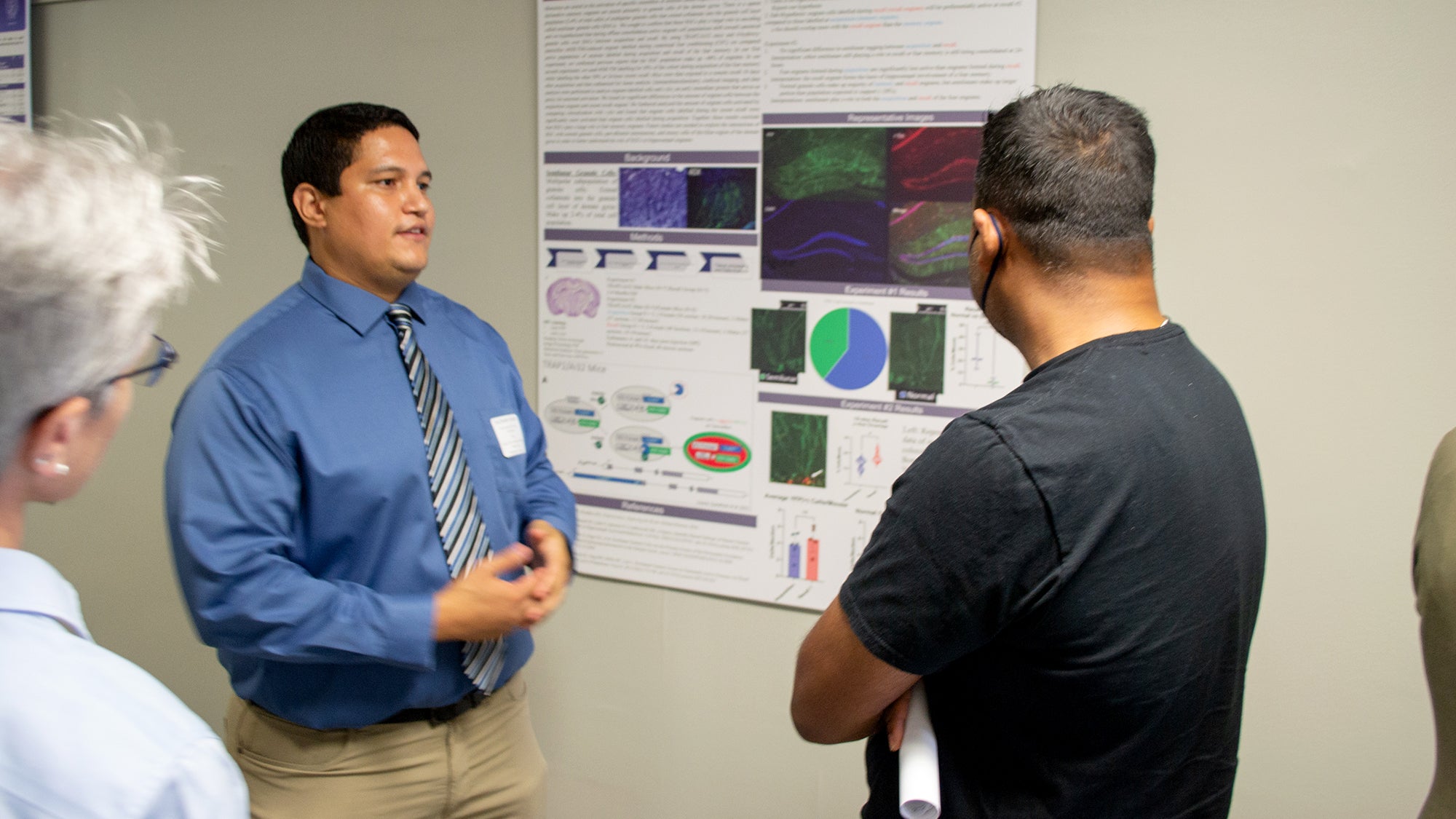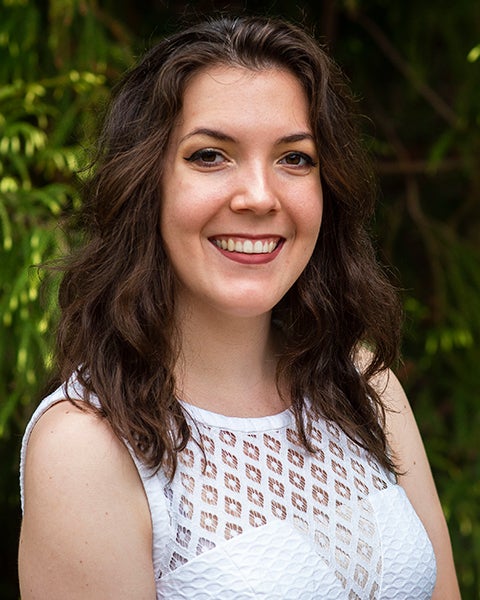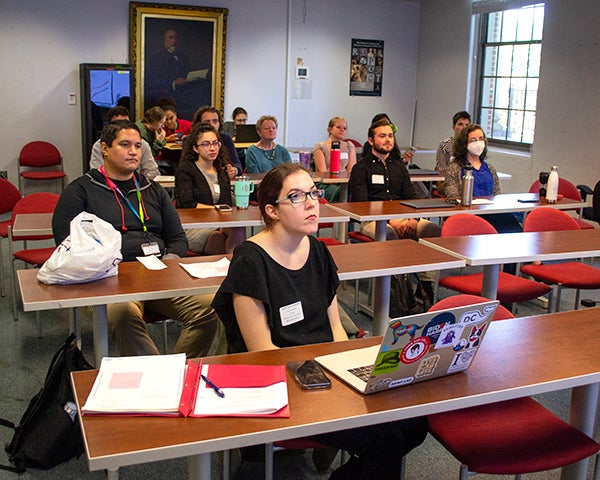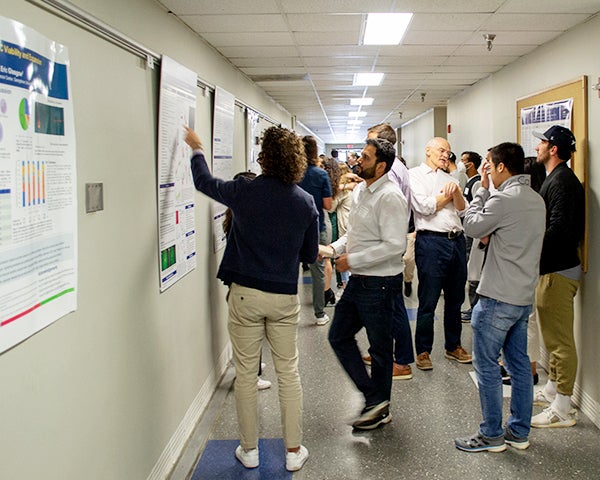At Student Research Day, Doctoral Students Translate Lab Research for Interdisciplinary Audience

Posted in GUMC Stories | Tagged Biomedical Graduate Education, research, student experience, student research
(October 14, 2022) — An annual student-run research conference for graduate students in Biomedical Graduate Education (BGE) programs provided an opportunity for students to translate their passion for their research into a language understood by those outside of their labs. Organized by the Medical Center Graduate Student Organization (MCGSO) with support from BGE staff, Student Research Day 2022 was held on October 6 in the Medical-Dental Building.

“The event is meant to support and highlight research for BGE students,” said Zoe Malchiodi (G’24), president of MCGSO and a doctoral candidate in tumor biology. “We’re also given the opportunity to practice presentation skills before sharing research at larger national conferences.”
“Student Research Day is a unique and invigorating experience,” said Caleb C. McKinney, PhD, MPS, associate dean of graduate and postdoctoral training and development for BGE. “Students across BGE programs come together and share their work, hone their presentation skills and learn about pertinent issues relevant to advancing their scientific careers.”
Honing Presentation Skills
Presenting at the research day encourages students to translate their research into a narrative that is more digestible to a lay audience.

“Presentation skills are really important,” said Zachary Colon (G’27), MCGSO vice president and a doctoral student in the Interdisciplinary Program in Neuroscience (IPN). “You need to be able to speak not only to your field but also to a general audience, and be able to craft a story to tell your research.”
The importance of speaking across disciplines was also raised by several participants.
“Students are able to receive feedback on their work from an interdisciplinary perspective that they don’t usually encounter in their day-to-day research group and department context,” said McKinney.
Student Research Day 2022 began with eight oral presentations that were followed by a question-and-answer session with faculty and students from across BGE. A group of volunteer faculty and postdocs also ranked presentations for awards.
“The faculty sometimes ask a really interesting question that the student may not be able to answer,” said Malchiodi. “But that’s the point of science — to keep asking questions.”

Making Connections Outside of the Lab
After a keynote address delivered by Cindy Buckmaster, PhD, director for public outreach with the National Animal Alliance, nine students gave poster presentations before the day concluded with a reception.
Student leaders of MCGSO chose this year’s keynote, who spoke about the importance of explaining to the general public why biomedical research that involves animals is necessary.
At the reception, awards were handed out for best oral and poster presentations. Karli Gilbert (G’24), MS, a fifth-year IPN doctoral student, received the award for best oral presentation.
“The success of Student Research Day is showcasing the passion behind student research,” Malchiodi said. “Students are really happy to talk about their research, especially to those who may not have previously known what they were working on.

“Plus, it’s nice to get out of the lab,” she added.
Although the Student Research Day is the largest annual event for MCGSO, the group organizes other social and service events throughout the year, including an annual Science Night at a local middle school, where BGE students show children how to conduct experiments, such as extracting DNA from a strawberry.
Heather Wilpone-Welborn
GUMC Communications
